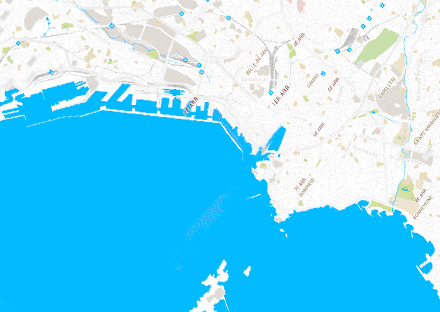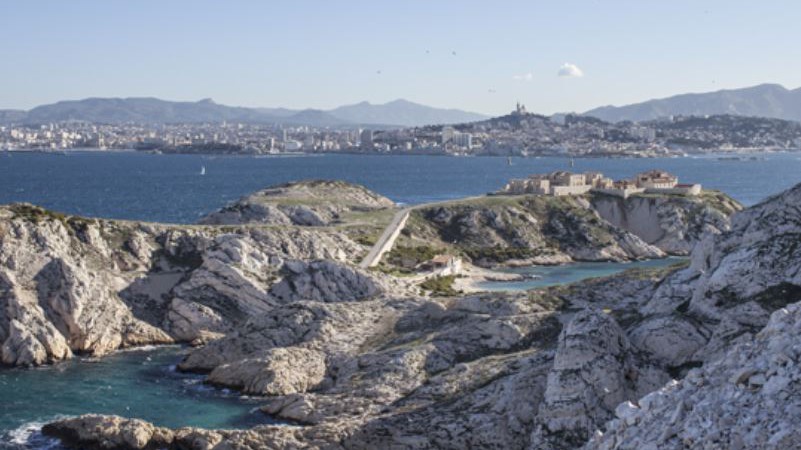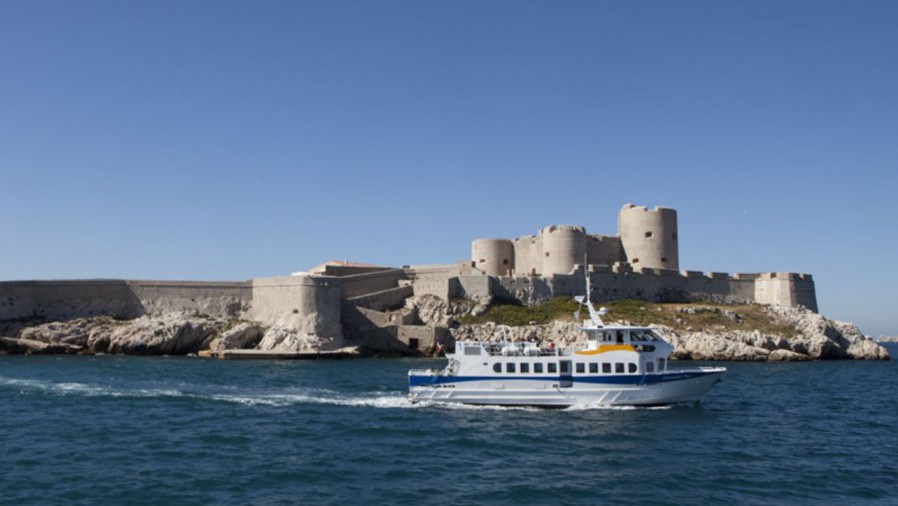THE FRIULI ARCHIPELAGO
In the heart of the harbour of Marseille, opposite the city, the Frioul archipelago, with the islands of Pomègues, Ratonneau, Tiboulen and If, is a haven of peace that is still wild and preserved, with coves sheltered from the Mistral or the east wind that attract Marseille residents and holidaymakers "to have a good time". The luckiest ones go there to spend the day by boat, the others take the Friuli If Express shuttles.
FRIULI IS MADE UP OF TWO ISLANDS, RATONNEAU AND POMÈGUES, CONNECTED BY A FORMING A PORT
Ratonneau is the most frequented island. You will discover the tip
Brigantine, the Calanque de Morgeret, the fort of Ratonneau which overlooks
the magnificent Calanque de Saint-Estève, the port of Eoube and the old
Caroline Hospital, which is now hosting many events
Cultural.
The islands of the
Friuli are an ideal destination for nature lovers,
history, unusual walks, swimming and water activities.
Pomègues remains wilder and more authentic with the
Calanque de la Crine, the port and the tower of Pomègues which offers a
magnificent panorama.
The Port of Frioul : The islands of Pomègues and Ratonneau were connected in 1822 by a large
dike, allowing the creation of the port of Frioul. The port has
today a capacity of about 1500 seats + many places
for passing boats. There are a few bar-restaurants on the
the docks, dwellings and many boats as sheds.
THE CASTLE OF IF
Built by François 1st from 1524, the fortress of the island
d'If became for 400 years a prison where hard-headed people were locked up,
bandits, Protestants and sick people banished from the City.
Fortification
The oldest royal statue in the archipelago, the Château d'If is immortalized
by the legendary Count of Monte Cristo, hero of Alexander's novel
Dumas.
The walkway offers a breathtaking view of Marseille and its extraordinary bay.
The Château d'If is now open to the public by the Centre des Monuments Nationaux.
Access to the island is paid, tickets are on sale on arrival on If.
A BIT OF HISTORY...
Linked to that of Marseille, the history of the Frioul Islands begins
The arrival of the Greek sailors who, in the sixth century B.C.
founded Massalia. In 49 BC, Julius Caesar's fleet threw
anchored off the islands and besieged the city for a few days.
For the centuries that followed, the archipelago was regularly used as a stopover.
During
throughout the sixteenth century, the Frioul Islands were in the front row
during attacks by French and foreign fleets, particularly
Spanish and Italian. In 1597, the Florentines succeeded in
Pomègues and built a defensive tower there.
An outpost of the Phocaean city, the archipelago was further fortified
again.
For two centuries, this archipelago played a health role
very important. Indeed, the many commercial exchanges exposed
Marseilles to the plague and cholera.
It is in the Frioul Islands, and particularly in the port
Pomègues, that the ships were quarantined
and their goods. In the nineteenth century, a dike was built
built between Ratonneau and Pomègues, linking the port of Pomègues and
the new lazaretto, north of Ratonneau. The Caroline Hospital offered a
Architectural and sanitary design ahead of its time.
The hospital was definitively closed in 1948.
During the Second
World War, the Germans, installed in the old forts,
suffered bombing by the American air force.
In 1970, the
The French Navy ceded the archipelago to the city of Marseille, which
built on Ratonneau village and private dwellings.

 StayHostel, ...
StayHostel, ... VisitMuseums, ...
VisitMuseums, ... Go outRestaurants, ...
Go outRestaurants, ... ShopsFashion, ...
ShopsFashion, ... LeisuresBeaches, sports, ...
LeisuresBeaches, sports, ... ServicesTourism, ...
ServicesTourism, ... Euromed - La joliette - L’Estaque
Euromed - La joliette - L’Estaque Le Vieux Port
Le Vieux Port Le Panier
Le Panier Canebière - Préfecture
Canebière - Préfecture Endoume - Les Catalans
Endoume - Les Catalans Le Carré d’Or
Le Carré d’Or Borely - Plages-Pointe Rouge
Borely - Plages-Pointe Rouge Castellane - Prado-Mazargues
Castellane - Prado-Mazargues les Îles - les Calanques
les Îles - les Calanques










